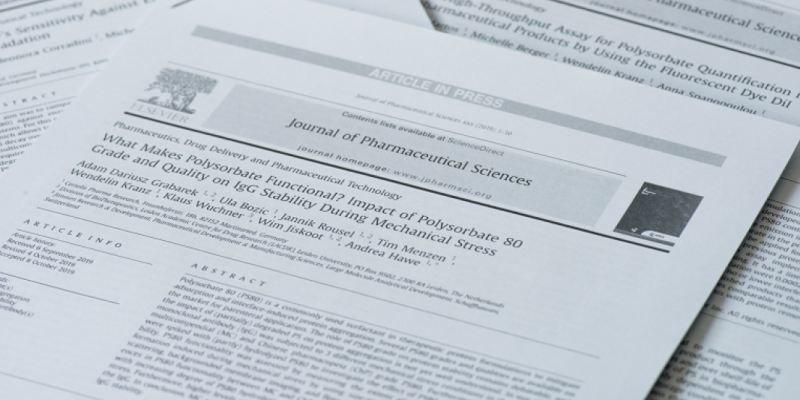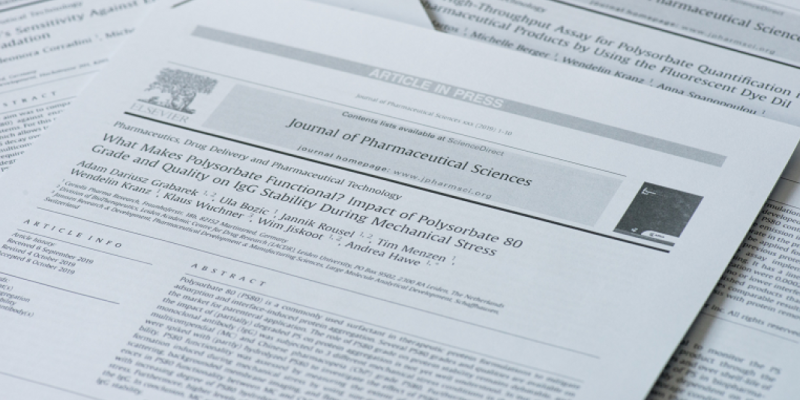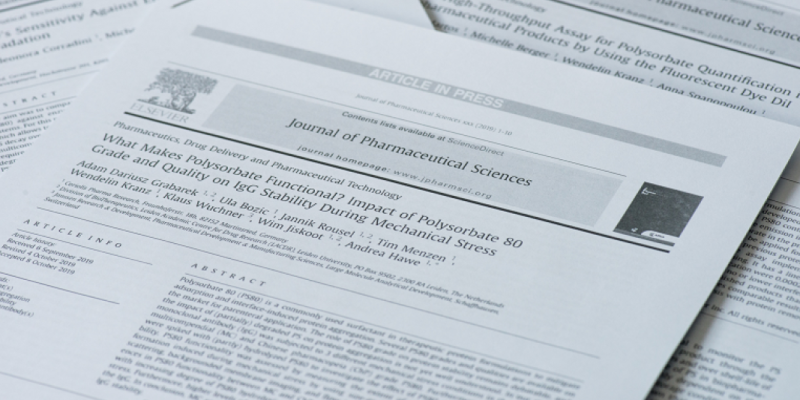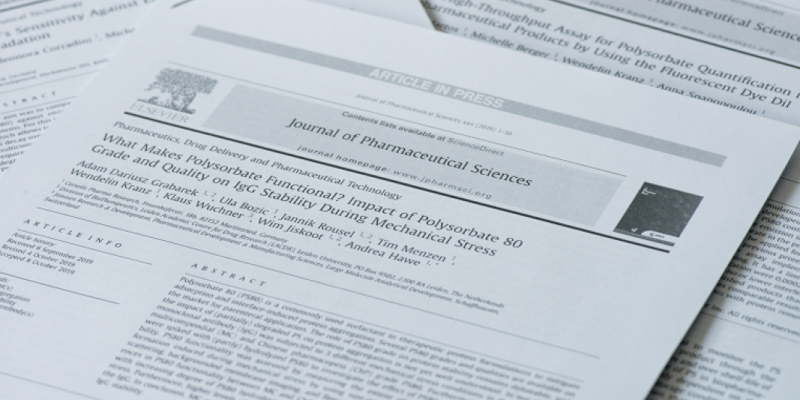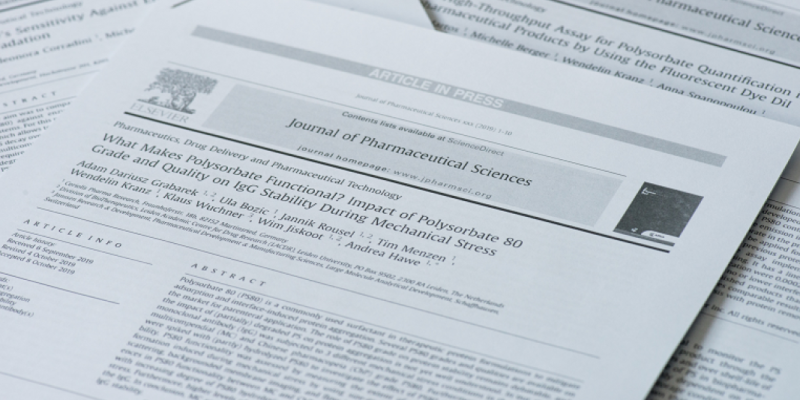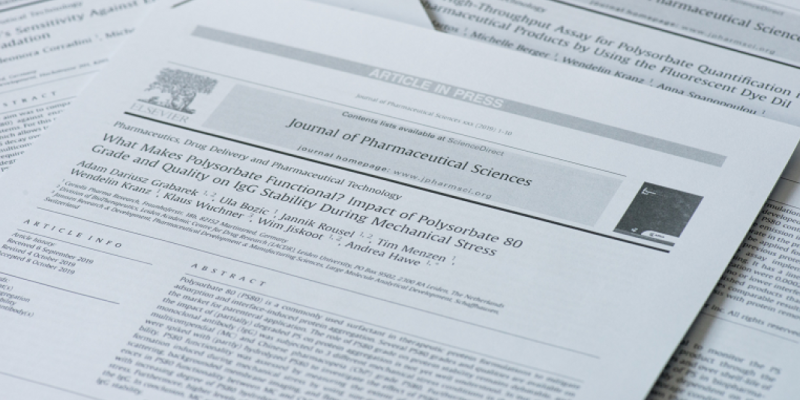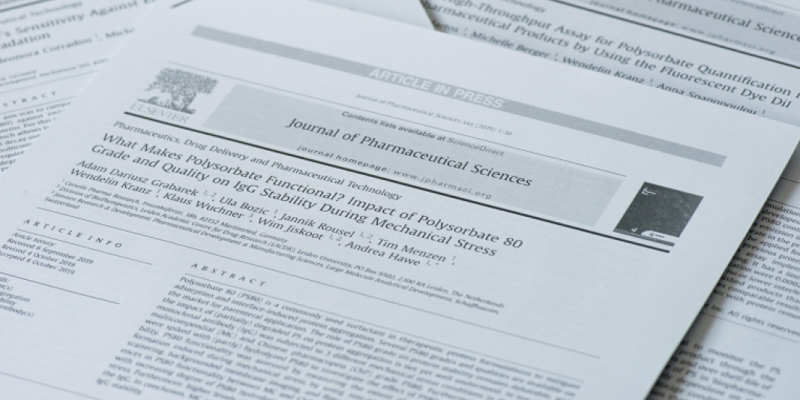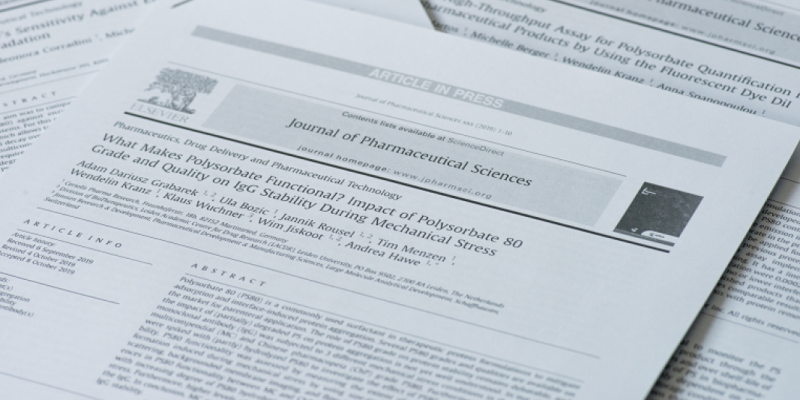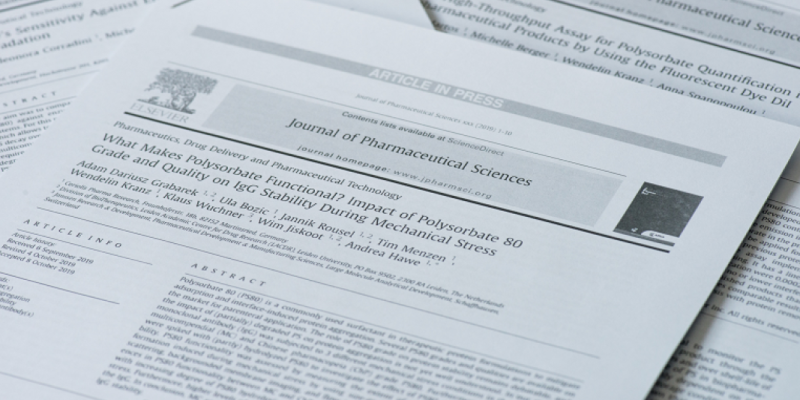Ongoing challenges to develop high concentration monoclonal antibody-based formulations for subcutaneous administration: Quo Vadis?
J Pharm Sci. 2021 Nov.
Although many subcutaneously (s.c.) delivered, high-concentration antibody formulations (HCAF) have received regulatory approval and are widely used commercially, formulation scientists are still presented with many ongoing challenges during HCAF development with new mAb and mAb-based candidates. Depending on the specific physicochemical and biological properties of a particular mAb-based molecule, such challenges vary from pharmaceutical attributes e.g., stability, viscosity, manufacturability, to clinical performance e.g., bioavailability, immunogenicity, and finally to patient experience e.g., preference for s.c. vs. intravenous delivery and/or preferred interactions with health-care professionals. This commentary focuses on one key formulation obstacle encountered during HCAF development: how to maximize the dose of the drug? We examine methodologies for increasing the protein concentration, increasing the volume delivered, or combining both approaches together. We discuss commonly encountered hurdles, i.e., physical protein instability and solution volume limitations, and we provide recommendations to formulation scientists to facilitate their development of s.c. administered HCAF with new mAb-based product candidates.
Keywords: Monoclonal antibodies, High concentration, Viscosity, Aggregation, Protein engineering, Subcutaneous
J Pharm Sci. 2021 Nov.


